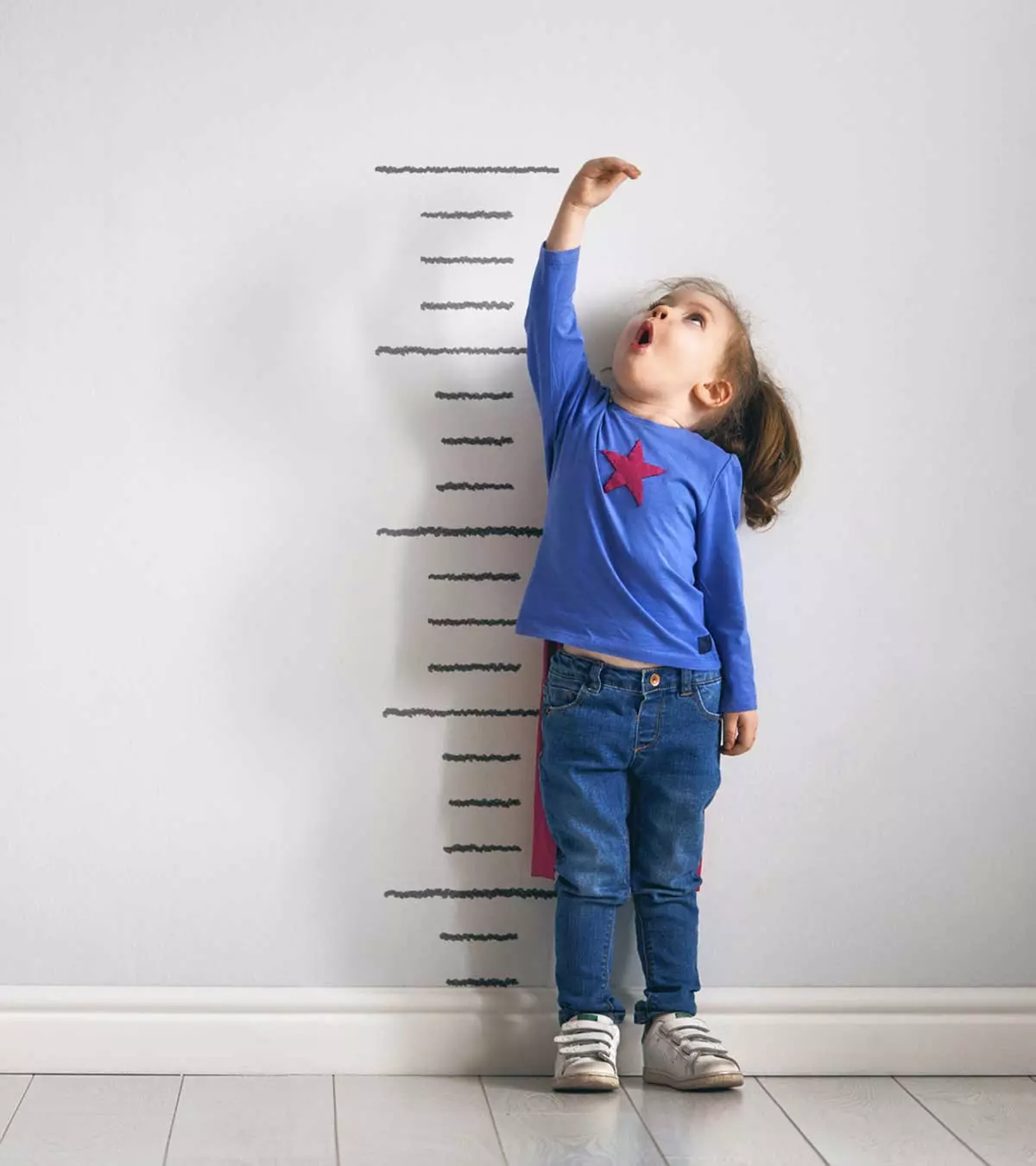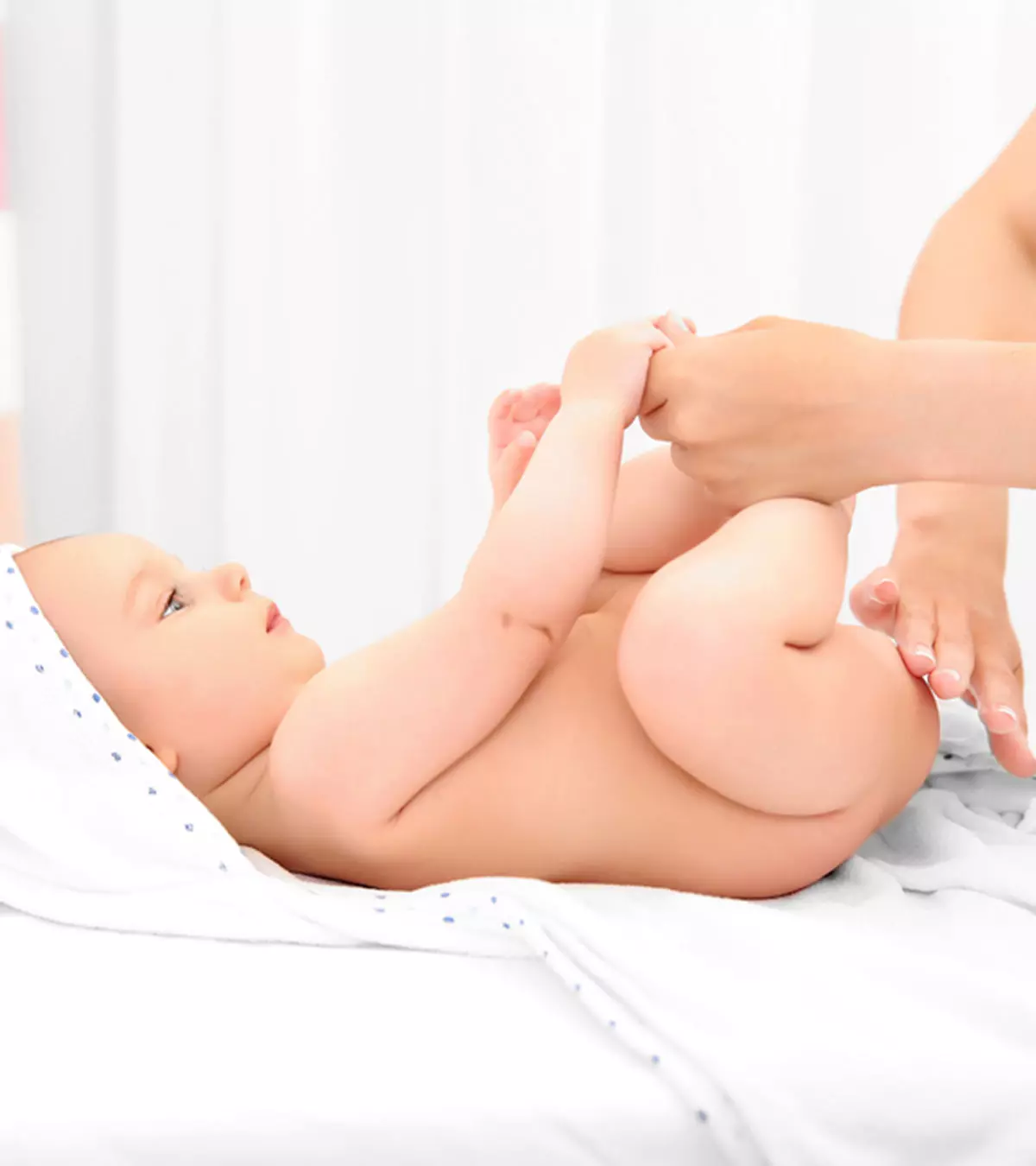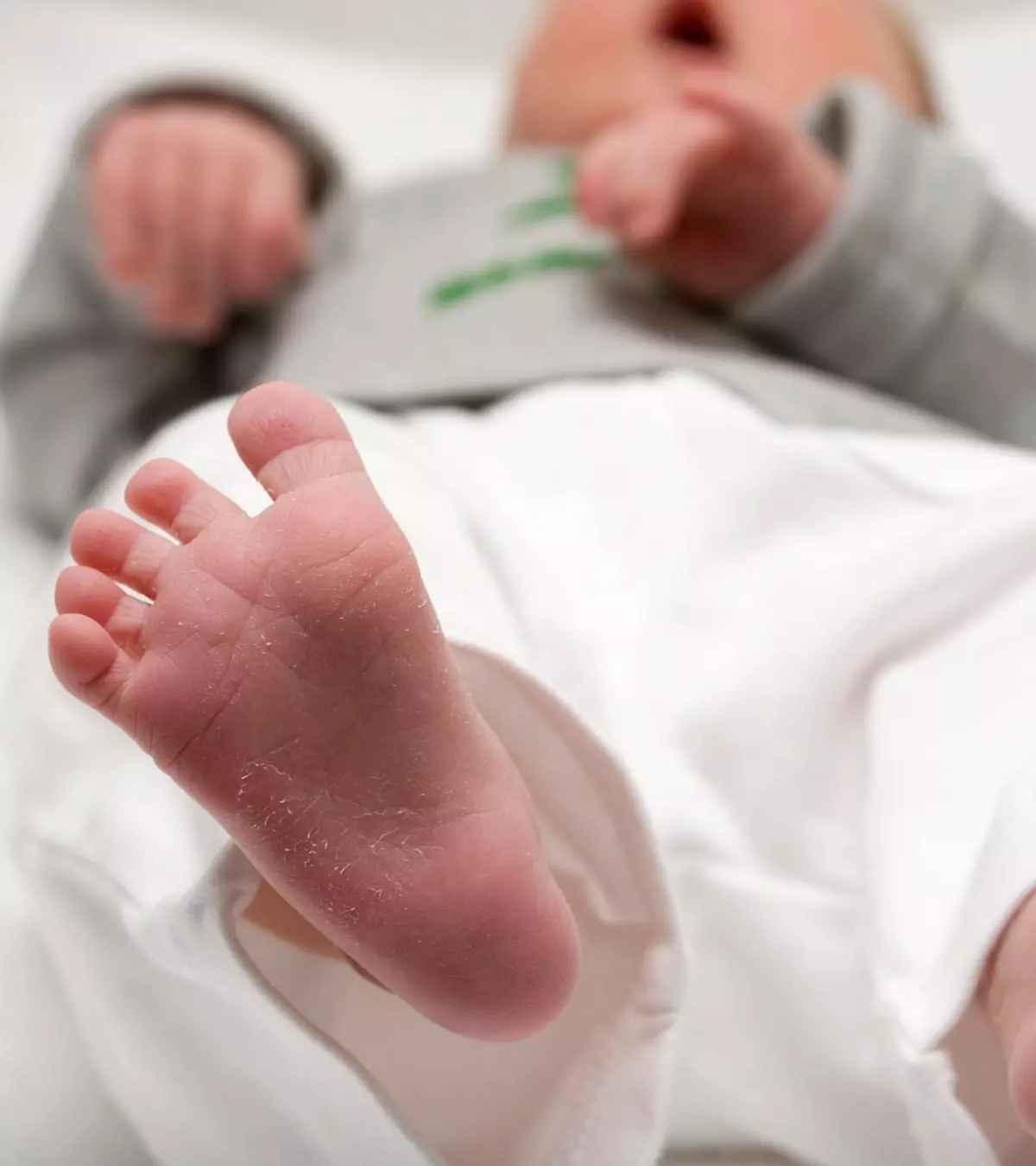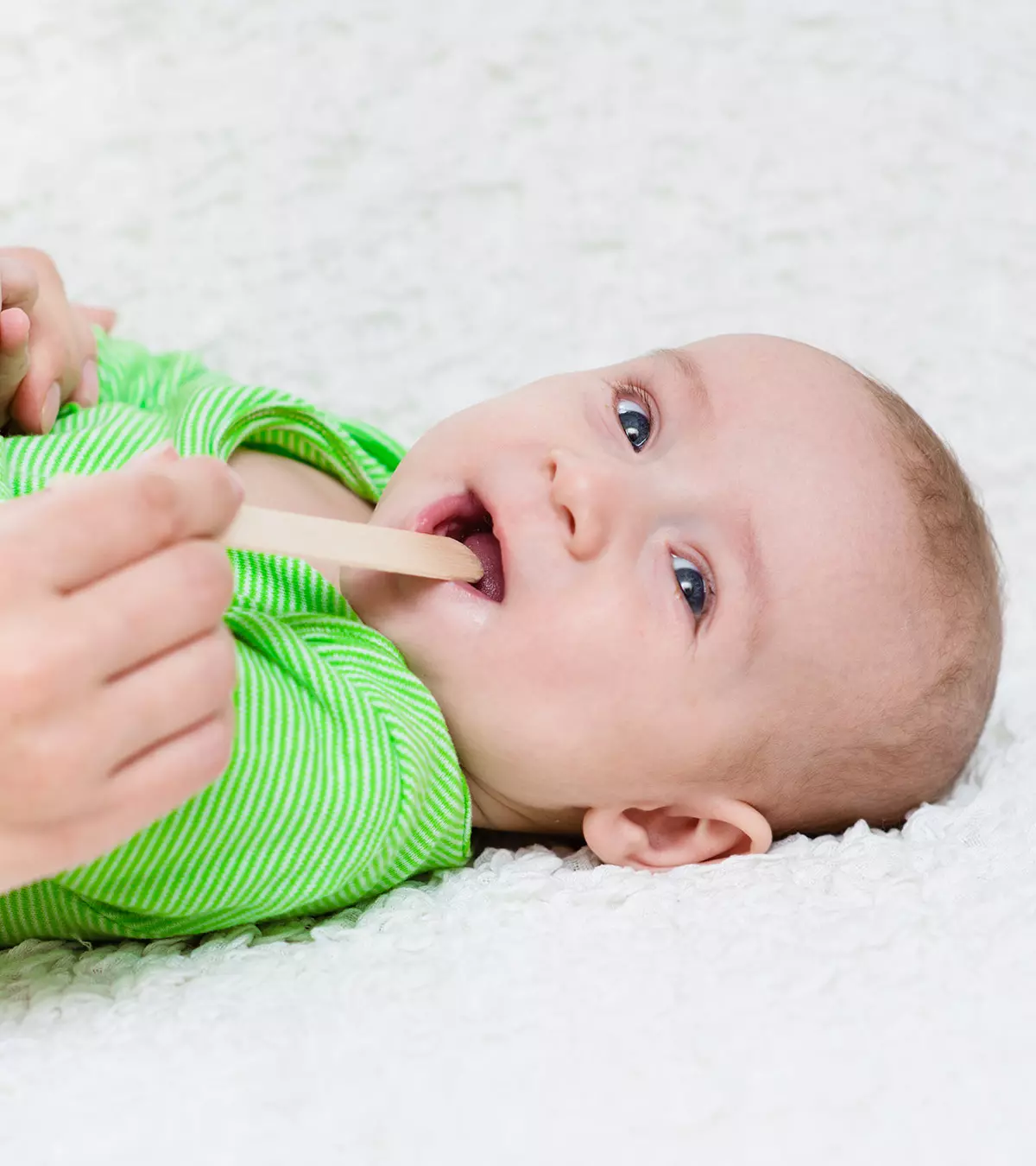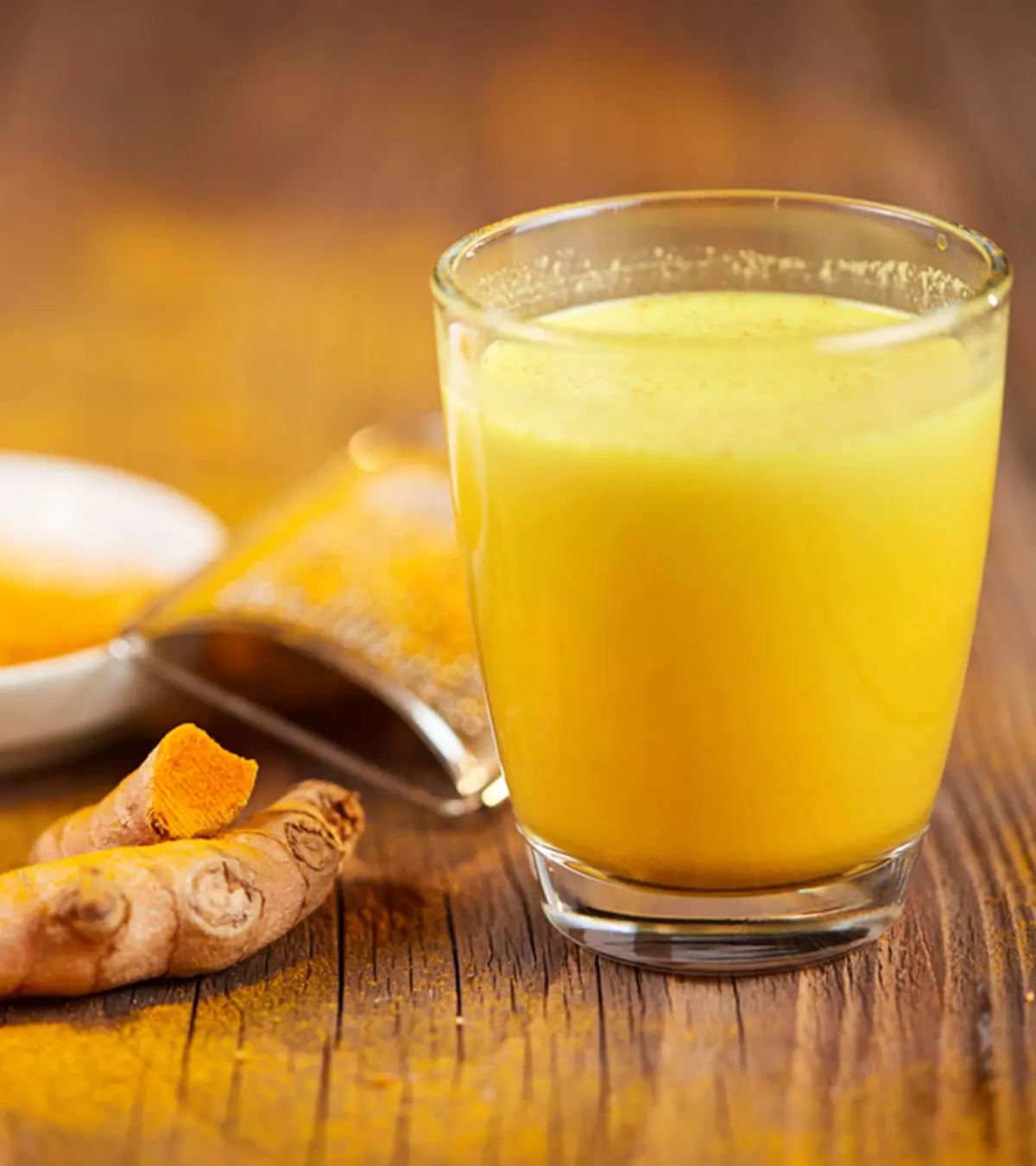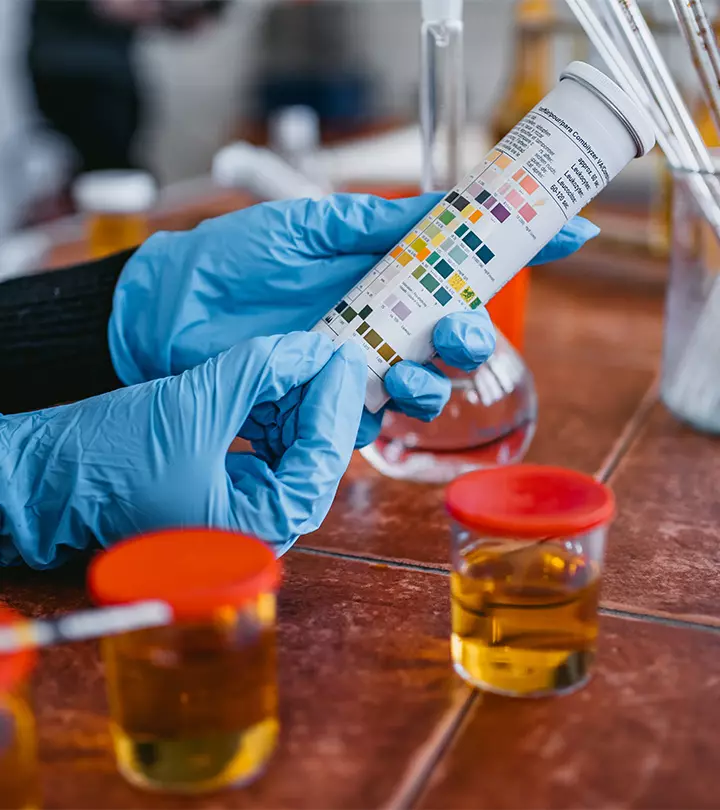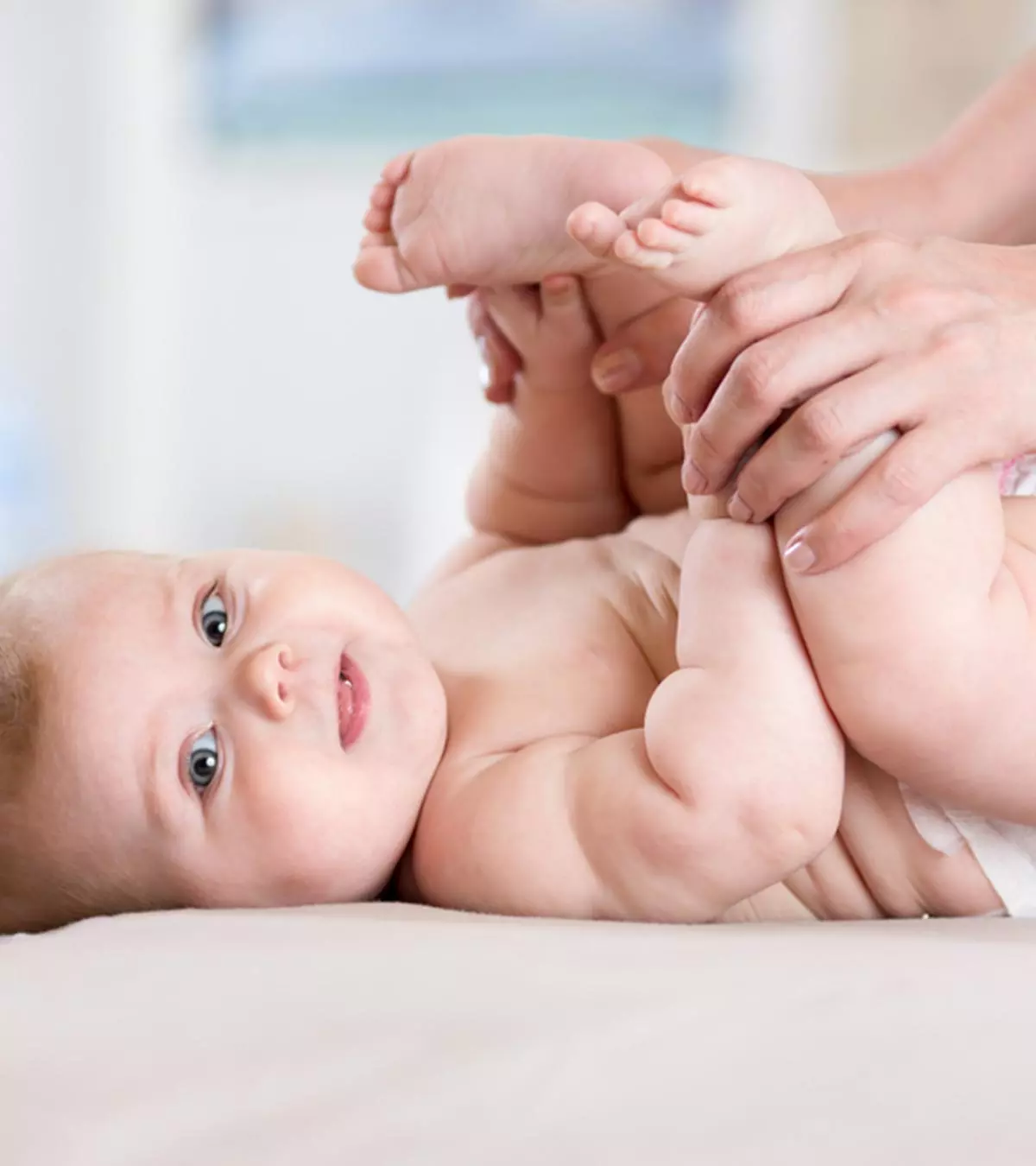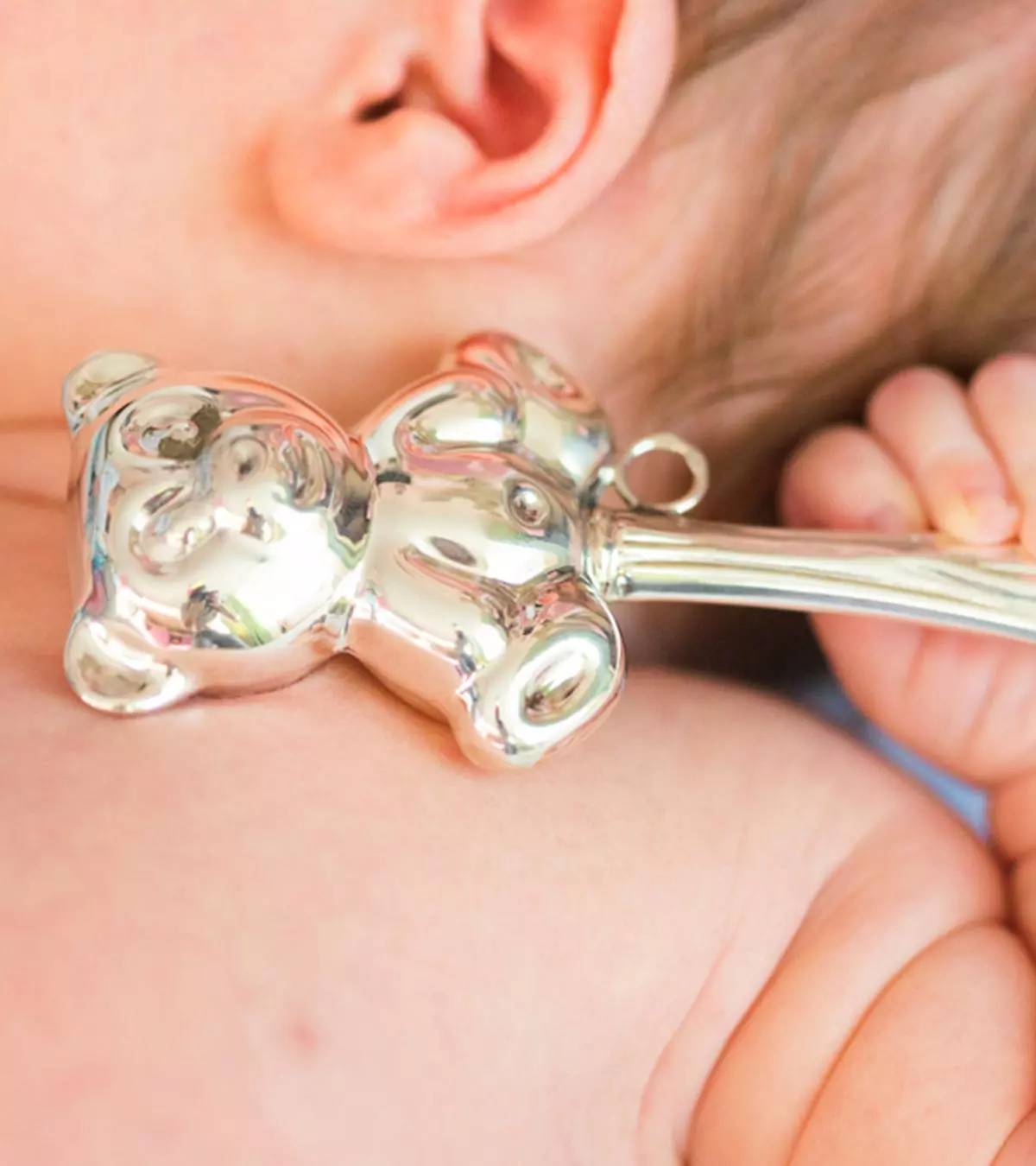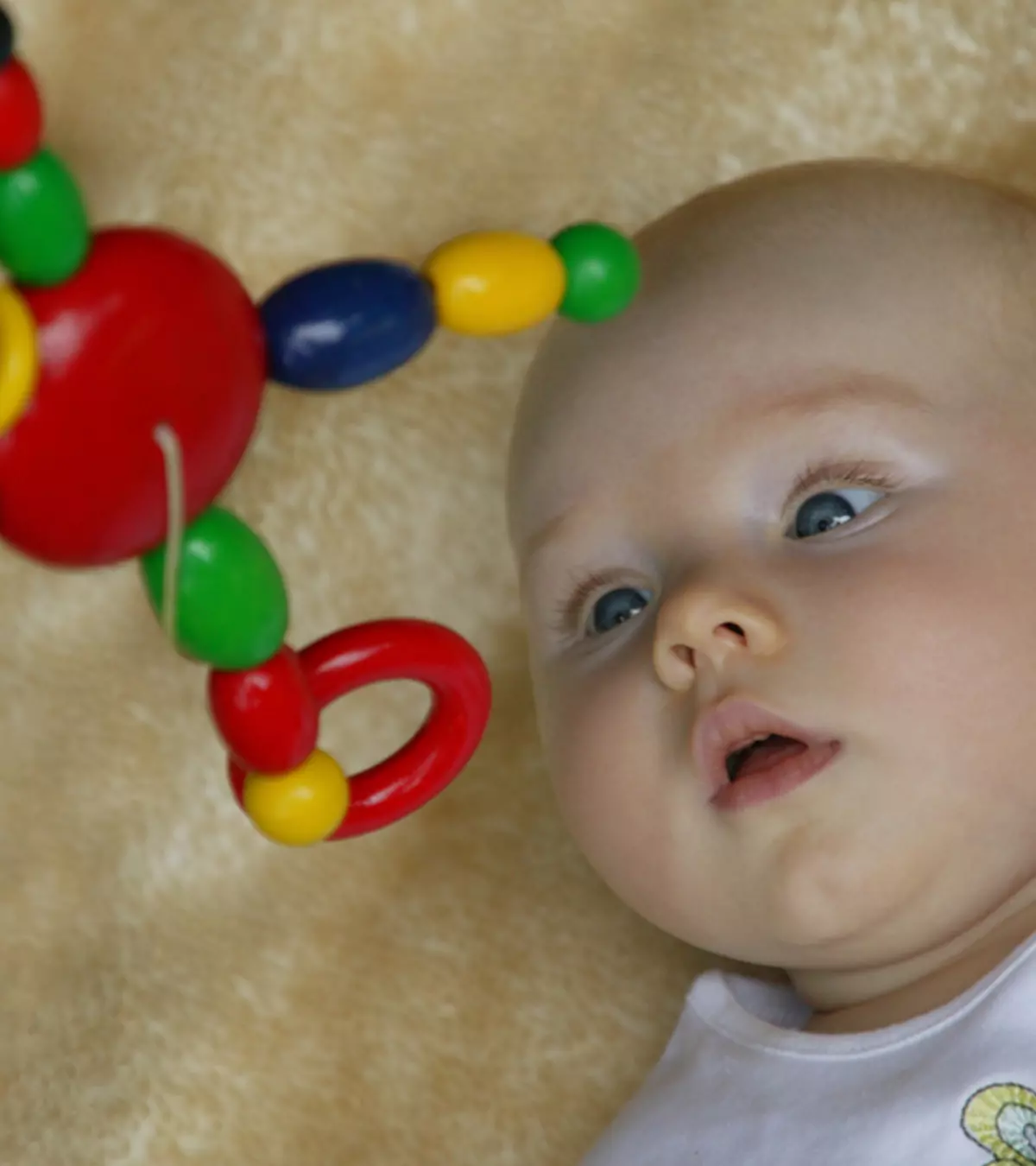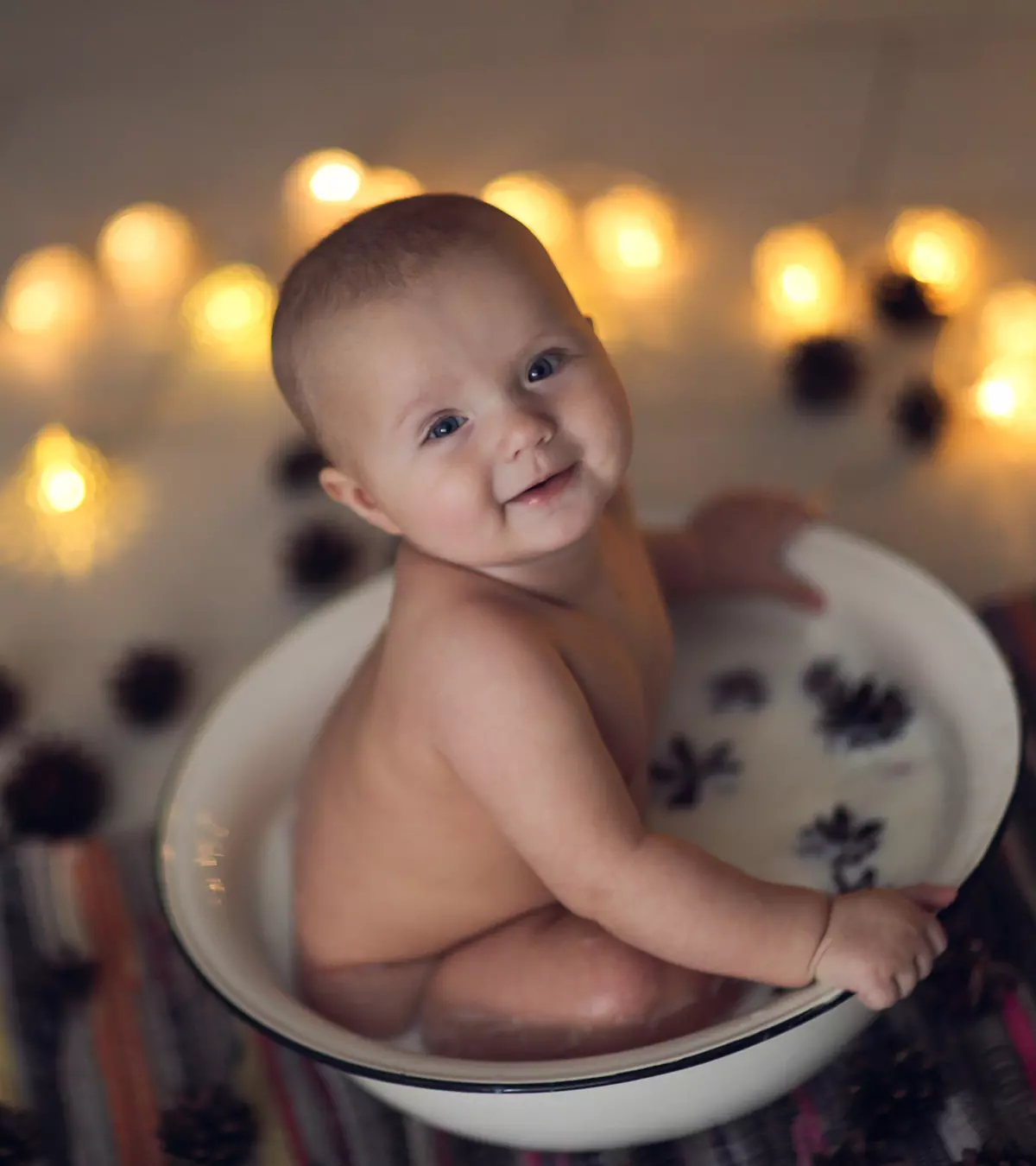
Image: ShutterStock
Many mothers may consider giving breast milk baths for babies. Breast milk is packed with antibodies and nutrients to nourish the baby. Although it is unfamiliar for many, a breast milk bath benefits the baby’s skin. This may help moisten your baby’s skin and relieve itching and dryness. A breast milk bath may also improve babies’ skin issues such as eczemaiA skin condition characterized by dry, itchy, and inflamed skin. .
Read on to know the benefits of breast milk bath for babies and how to do it in the right way.
Key Pointers
- Bathing a baby in water mixed with some breast milk is known as a breast milk bath.
- It benefits the baby by moisturizing their skin, protecting them from pathogens, and soothing any rashes.
- About 150ml to 300ml of breast milk is sufficient for a baby bathtub full of water.
- You can give a breast-milk bath weekly or fortnightly and use old and expired milk unless it has gone bad.
What Is A Breast Milk Bath?
Sometimes the baby’s bath water is mixed with some quantity of breast milk. The water is then used to soak the baby in a bathtub and clean them the usual way. A breast milk bath offers notable benefits for babies.
What Are The Benefits Of A Breast Milk Bath?
Not all may consider a breast milk bath, though it can be beneficial. Here are the benefits it offers:
- Moisturizes the skin: Breast milk contains fatty acids such as oleic acid, palmitic acid, and linolenic acid (1). These fatty acids can work as a barrier on the skin and lock in the moisture to prevent dryness. Some suggest that breast milk baths can effectively treat itchiness caused by a baby’s dry skin.
Audrey Tan, a mother of three, tried the breast milk bath for her daughter. Narrating her experience, she says, “I actually produced enough milk to have a few excess packs to do a milk bath for Tiffany! I think it’s something you have to do for the baby constantly to see better effects, but her flaking skin did become better after the bath (i).”

- Protects skin and body against pathogens: Breast milk contains several antibodies and has strong anti-infective properties (2). These antibodies can prevent pathogenic invasion of minor cuts and bruises on the infant’s body.
The fatty acids present in breast milk, such as oleic acid, also play a part in eliminating bacteria. Oleic acid can kill the bacteria called Staphylococcus aureus (3), which is commonly present on the skin (4).
- Reduces and repairs skin damage: The linolenic acid present in breast milk has two variants namely omega-3 and omega-6 fatty acids. The acid mitigates the damage to the baby’s skin due to sunlight (5).
Topical application of omega 3 and 6 fatty acids can bring down the inflammatory response of the skin damaged by UV light. It means a breast milk bath could help remedy any sunburns on the baby’s skin.
- Heals small wounds: The omega fatty acids in the milk can heal minor wounds and provide relief. The fatty acids achieve it by intervening in the wound repair function of the skin.
- Treats baby acne: Baby acne may occur around two weeks of age. It causes pimples, tiny bumps, or blemishes on a baby’s skin, usually on the face or chest. Some babies may even be born with acne (6). A breast milk bath may help soothe and reduce baby acne as the milk contains lauric acid, which is antibacterial. Additionally, breast milk’s soothing and moisturizing properties may help hasten skin repair (7).
 Quick fact
Quick fact- Soothes diaper rash and eczema: Research has shown that breast milk can be used as a safe topical remedy for curing diaper dermatitis or baby diaper rash and eczema (8) (9). Breast milk is considered a low-cost and reliable alternative to topical ointments used for the treatment of these skin conditions. Therefore, a breast milk bath can be an ideal home remedy for diaper rash and eczema.
 Research finds
Research finds
- Prevents pump and dump (for mothers): Nursing mothers who express breast milk during breast engorgement need not dispose of the excess milk. Instead, the surplus breast milk can be used to bathe the baby. It prevents the wastage of the milk.
A warm milk bath can also create a soothing experience for you and your baby and help strengthen your emotional bond. A breast milk bath is also safe for babies. Even a small quantity of breast milk is sufficient for bathing babies, which brings us to the next point.
What Quantity Of Breast Milk Should You Use For The Bath?

Use enough breast milk to make the bath water cloudy. You can add about 150ml to 300ml of breast milk in a baby bathtub full of water. You may add even more, but a quantity up to 300ml is sufficient. The baby might smell ‘milky’ if you use too much milk in the bath water.
How To Bath The Baby In Breast Milk?
Giving the baby a breast milk bath is the same as giving them a regular bath. Here is how you can do it:
- Fill the tub with warm water and add freshly expressed breast milk. You can also use frozen breast milk by thawing it before adding. If it is summer, and your baby baths in cold water, then you can use the thawed breast milk to keep the water warm. You can use a thermometer to ensure the water is not too hot or too cold.
- Let the baby sit in the bathtub. Dribble the water all over the baby’s body using your hands. Pour more water on rashes if the baby has any.
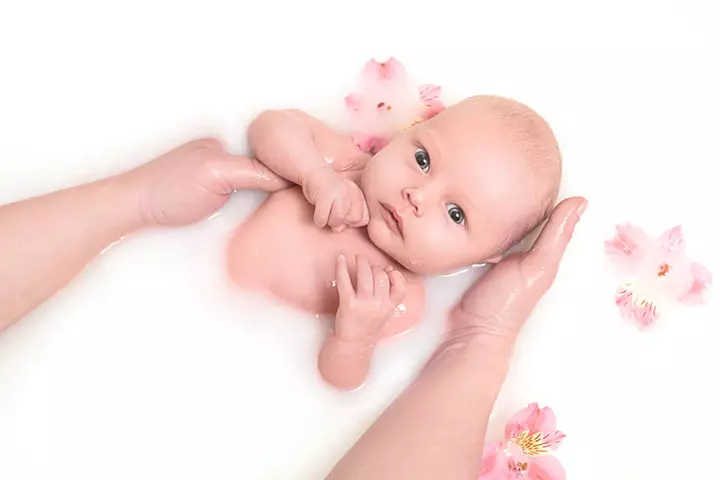
- Let the baby soak in the water for about 10-15 minutes. After that, take the baby out of the bath and pat dry them with a fresh towel. You don’t have to rinse them with plain water.
If you are wondering how much breast milk one should use for a breast milk bath, the answer is – it varies based on the baby’s size.
Tan advises, “Take a few packs of breastmilk and mix it with hot/warm water. The consistency should look cloudy but not too diluted.” She adds, “I’ve seen other parents fill up tubs of this for older kids to soak in, but since Tiffany is tiny and unable to lie down in the tub without support, I decided to sponge her down instead.”
You can use baby-safe moisturizers or lotions on newborns and babies after the bath to lock the moisture into the skin and dress the baby immediately in weather-appropriate clothing. Moisturizing is vital to maintaining a consistent baby skin care regimen, so do not skip it.
Note: Using soap or shampoo during breast milk baths is not necessary, but if you want to use soap, opt for a fragrance-free product.
Can You Use Old Breast Milk For A Breast Milk Bath?

There is no harm in using old and expired breast milk unless it smells bad or has curdled. Refrigerated milk should be used within six days while frozen milk has a long life of six months (10). Therefore, you can use the same criteria for choosing breast milk for the baby’s bath as well.
Does A Baby Need Breast Milk Bath Every Day?
There is no need for a breast milk bath every day. You can give a weekly or fortnightly bath depending on the overall health of the baby. If the baby has severe diaper rash or eczema, then you may give them a breast milk bath twice a week. You can reduce the number of baths once the baby shows improvement.
Frequently Asked Questions
1. Can I use frozen breast milk for a breast milk bath?
Yes, frozen breast milk can be used for a breast milk bath. It must be thawed completely, and the final temperature should be checked before bathing the baby.
2. Can I add other ingredients to a breast milk bath, such as oatmeal or essential oils?
Yes, other ingredients such as oatmeal, essential oils, bath salts, or honey may be added to the breast milk bath. Make sure you use age-appropriate ingredients after discussing them with your healthcare provider.
3. How do I store leftover breast milk after a bath?
Breast milk used for the bath should be discarded after bathing your baby. Leftover breast milk in the container from where you took milk for the breast milk bath may be stored in the refrigerator for a few days or freezer for a longer duration. Remember to use it only for bathing and do not feed it to the baby (11).
Breast milk is not only the best source of nutrition for babies, but it also has benefits for their skin and health. A breast milk bath for babies is known to provide moisturization to their sensitive skin and soothe the signs of diaper rashes. However, ensure that your baby is not cold or in the water for too long while giving them a bath. Also, make sure you have enough breastmilk to feed your baby after the shower.
Infographic: Different Uses Of Breast Milk For Babies
Breast milk’s use doesn’t limit to feeding the baby. Instead, you can use breast milk to manage/treat several problems or conditions in babies. Our infographic enlists some of the non-nutritive breast milk uses mothers can give a try after consulting a doctor. Illustration: Momjunction Design Team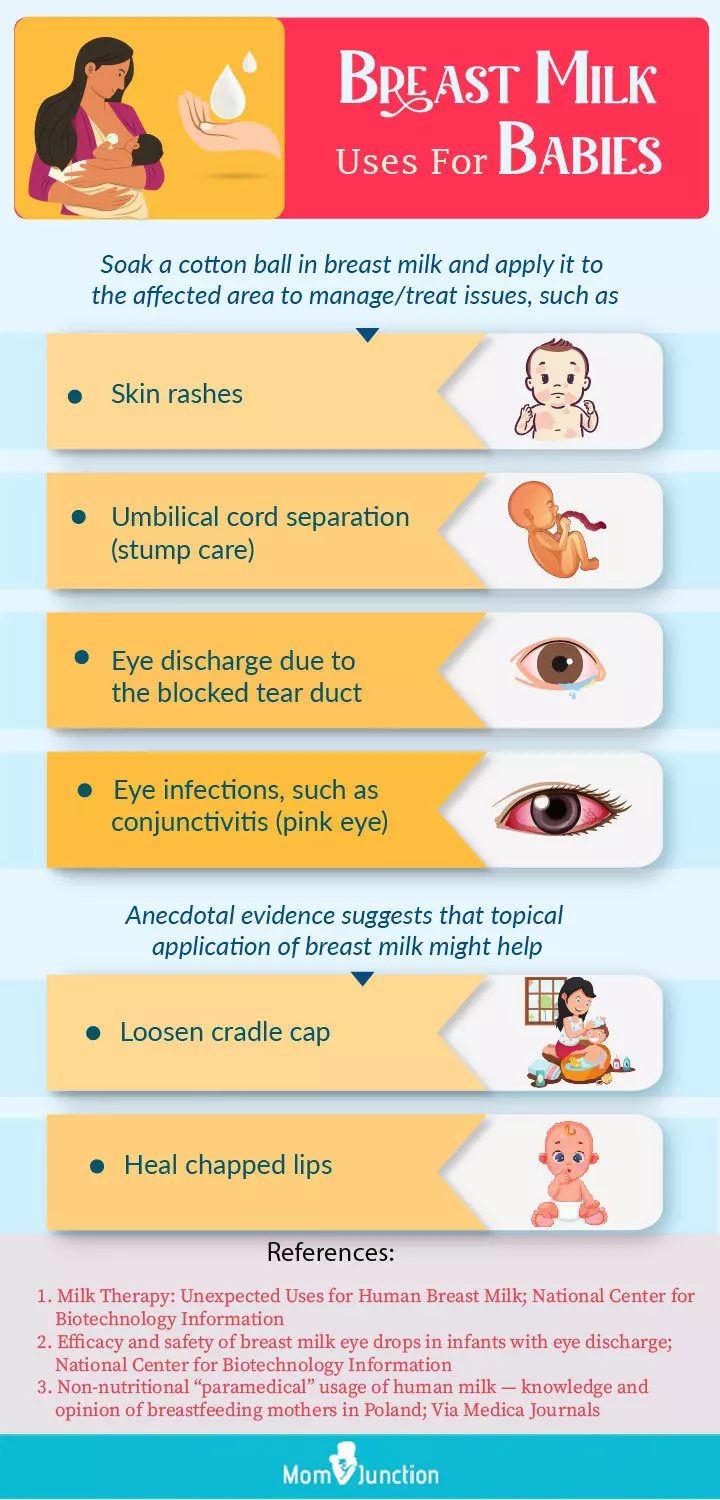
Illustration: Benefits Of Breast Milk Bath For Babies And How To Do It
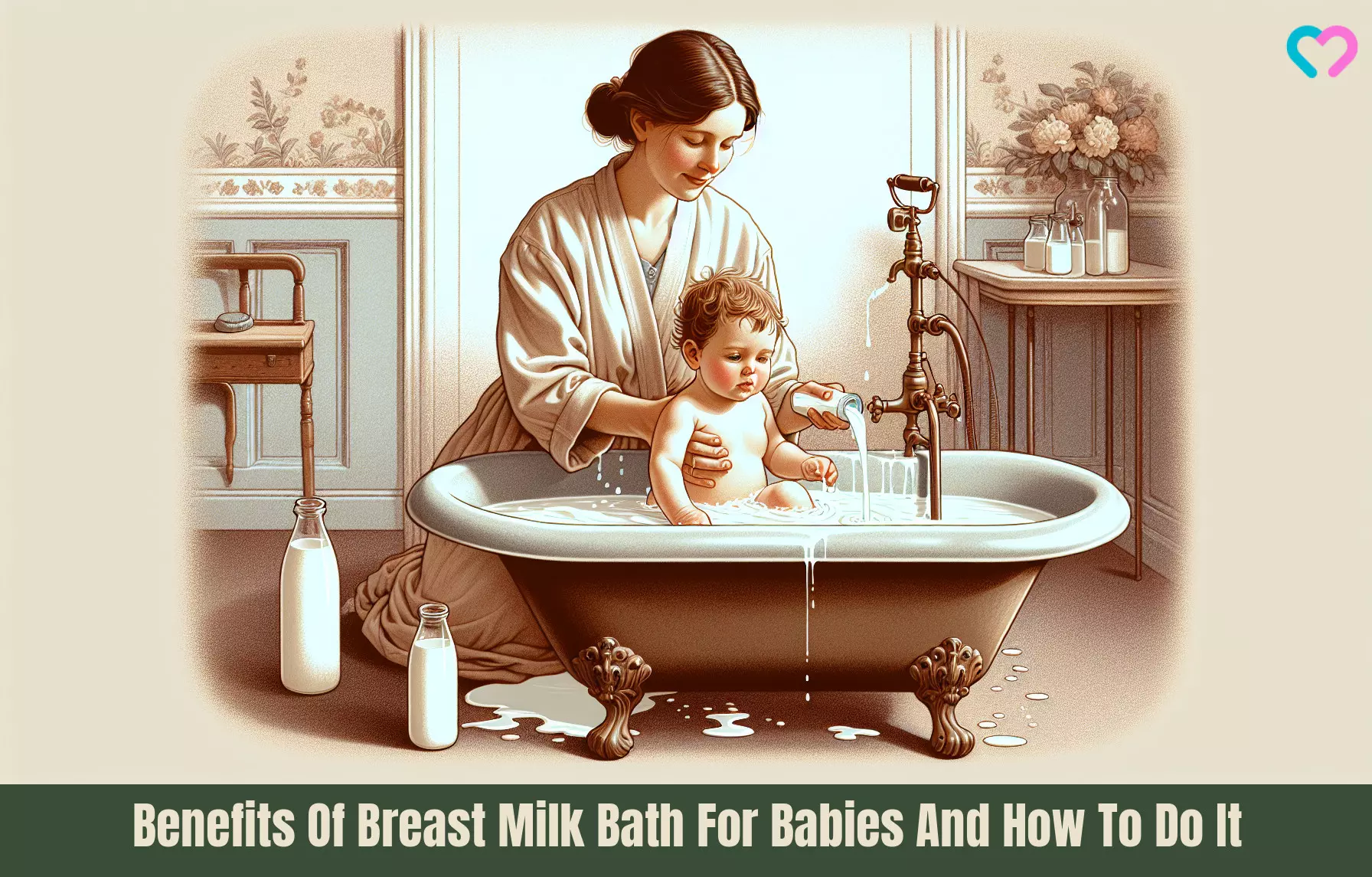
Image: Stable Diffusion/MomJunction Design Team
Personal Experience: Source
MomJunction articles include first-hand experiences to provide you with better insights through real-life narratives. Here are the sources of personal accounts referenced in this article.
i. (Breast)Milk bath for baby!https://forgetgrowingup.blogspot.com/2016/10/breastmilk-bath-for-baby.html
References
1. Constituents of human milk; United Nations University
2. The Benefits of Mother’s Own Milk; Stanford’s Children Health
3. Chen et al.; An Innate Bactericidal Oleic Acid Effective Against Skin Infection of Methicillin-Resistant Staphylococcus aureus; The Korean Society of Microbiology and Biotechnology
4. Staphylococcus; U.S. Department of Health & Human Services
5. Essential Fatty Acids and Skin Health; Oregon State University
6. Baby Acne; Cleveland Clinic
7. Breastfeeding Awareness Month; Champions For Children
8. Kasrae H et al.; Efficacy of topical application of human breast milk on atopic eczema healing among infants: a randomized clinical trial, National Center for Biotechnology Information
9. B. Seifi et al.; Assessment Effect of Breast Milk on Diaper Dermatitis; National Center for Biotechnology Information
10. Pumping and storing breast milk; U.S. Department of Health & Human Services
11. Breast Milk Storage and Preparation; CDC
12. Malgorzata Witkowska-Zimny et al.; Milk Therapy: Unexpected Uses for Human Breast Milk; National Center for Biotechnology Information
13. Leila Amiri Farahani et al.; Comparison of the Effect of Human Milk and Topical Hydrocortisone 1% on Diaper Dermatitis; Pediatric Dermatology
Community Experiences
Join the conversation and become a part of our nurturing community! Share your stories, experiences, and insights to connect with fellow parents.
Read full bio of Melissa Kotlen
Read full bio of Rohit Garoo
Read full bio of Dr. Ritika Shah
Read full bio of Anindita Ghatak








